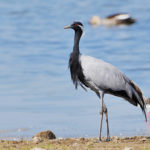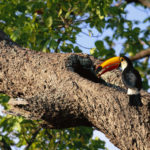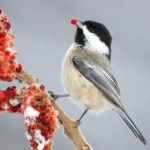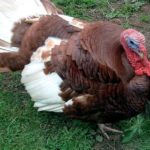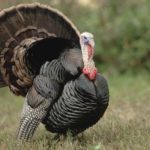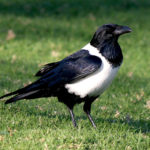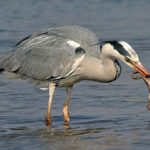Cranes
 Cranes are one of the most beloved birds, but at the same time this group of birds is considered one of the most vulnerable. Of the 15 species of cranes inhabiting our planet, 7 are in a threatening situation, and the rest are more or less subject to anthropogenic pressure.
Cranes are one of the most beloved birds, but at the same time this group of birds is considered one of the most vulnerable. Of the 15 species of cranes inhabiting our planet, 7 are in a threatening situation, and the rest are more or less subject to anthropogenic pressure.
Such external features of the cranes as long legs and neck, a small head and a straight beak allow us to rank them among a group of small birds. But it’s just with other shaggy birds they are not related. In a systematic relation to them are closer short-legged bustards, sultans, corncobs and coots. People who are far from science, it can confuse, at the same time, cranes can easily be distinguished from herons and storks by secondary signs. Their beak is shorter than the aistin, on the head there are almost always patches of naked red skin, if there is no such “cap” or “mask”, then it is replaced by feather ornaments.
In two species of cranes, eastern crowned and silver, under the throat there is a skin fold resembling an earring. In addition, the third-wing wing feathers of the cranes are elongated, so in the folded position, it seems as if the tail is magnificent in their cock-tail. The color of these birds is dominated by soft colors: white, black, gray. There are no external differences between males and females. It is interesting that among the cranes are common species of twins, differing from each other only by subtle details.
These pairs include Western and Eastern crowned, gray and Canadian, white and American, Indian and Australian cranes. On average, these birds reach a height of 1.2-1.5 m. The smallest species is the belladonna – with a weight of 2.5-3.5 kg has a height of only 95-97 cm, the largest Indian crane reaches a height of 180 cm and weighs up to 10 kg.
These birds are very widespread, they can be found on all continents except for Antarctica and South America. Everywhere cranes inhabit plain landscapes, most species clearly gravitate toward water bodies and wet biotopes (meadows, swamps, wet felling), only the bellies can rightly be attributed to the steppe inhabitants.



